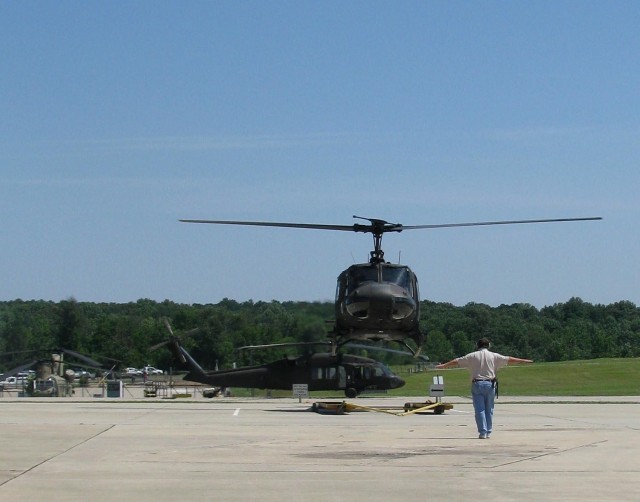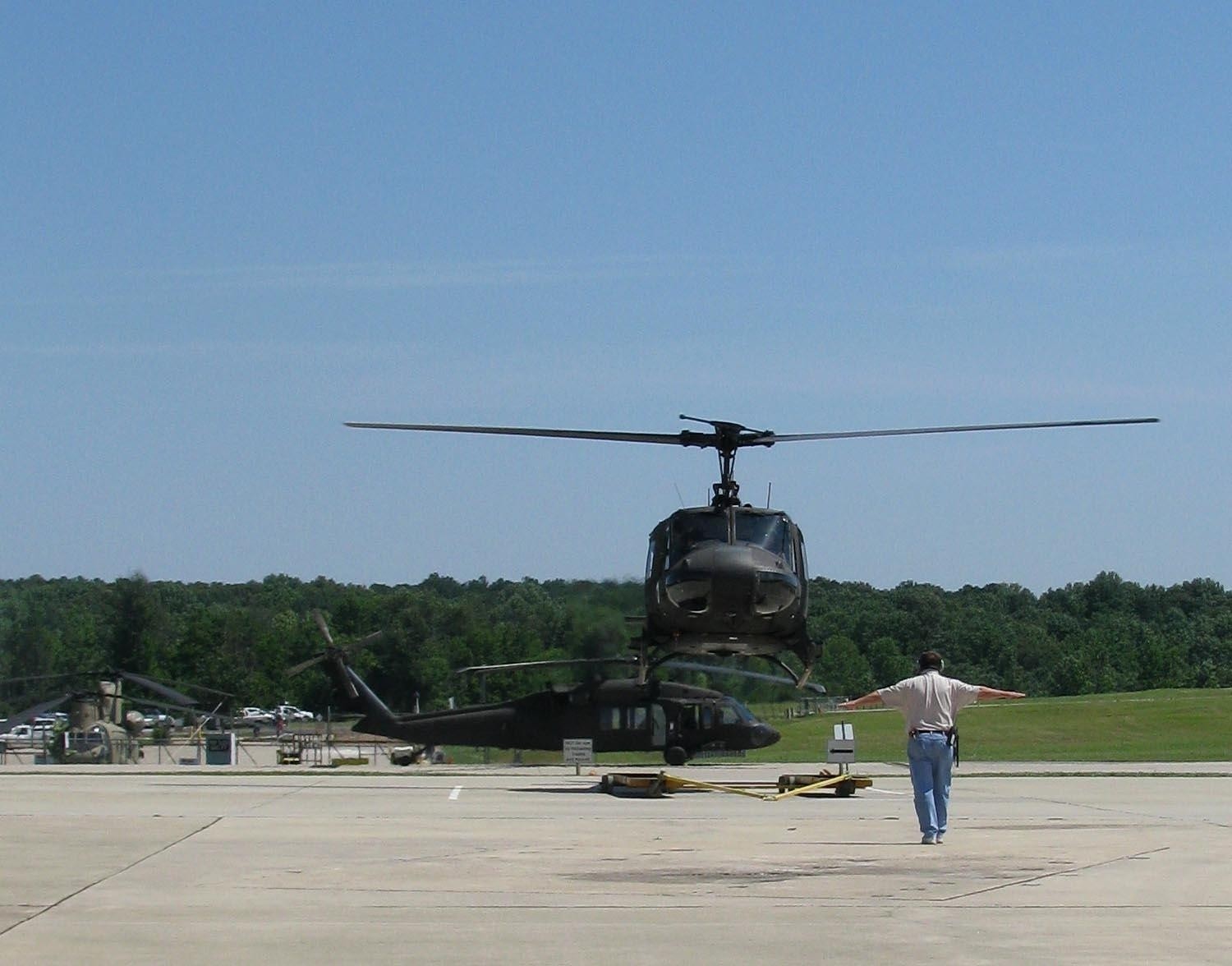The Aviation Technical Test Center tries to ensure that what looks good on paper works well, and safely, in the air.
"We are the Army developmental flight test organization," ATTC's Keith Darrow said. "The primary purpose of developmental testing is that when the Army has some new acquisition program, a new aircraft or a new aircraft system, to ensure that the Army is getting what it's paying for in terms of the performance and the aircraft handling qualities. It also includes the all important overall safety assessments."
Currently, the organization is split between two locations - Redstone Arsenal and Fort Rucker. Darrow said a few employees are scattered across the nation working with manufacturers and other organizations.
However, most of ATTC's 425 employees are located at Fort Rucker; and the Redstone segment has about 95. Base Realignment and Closure will see those two segments merging at a Redstone facility yet to be built.
"We will eventually move the entire organization here to Redstone not later than September 2011," Darrow said. "The only thing holding us up from moving today is a shortfall in facilities to accommodate everyone. BRAC has some money fenced in order to build a new flight test complex, the centerpiece of which will be a big, huge new 130,000 square foot hangar facility on the west side of the airfield."
Currently occupying several buildings situated around the Redstone Airfield, ATTC boasts ownership of a couple of every helicopter the Army flies. Some are reliable standbys, like the UH-1 Huey. Some are so new they still have the tags on them.
"This CH-47F model Chinook is a little over a month old. We just picked it up from the factory," Rick Ostlund, operations officer, said. "It's the newest model. It's the heavy-lift aircraft."
ATTC fulfills several missions. It does a lot of flight testing for new systems. It not only checks to see if the new equipment functions as designed, it also sees how the hardware integrates into the total aircraft. That includes user accessibility, airworthiness and aircraft handling.
For the Redstone portion of the organization, digital communications have become very important for ATTC in recent years.
"A growing business for us is interoperability testing and communications testing, particularly with the advent of digital communication devices not only on the aircraft, but also with various ground-based systems," Darrow said. "It's essential that before those things are fielded to the Soldiers fighting wars they are thoroughly tested. Information transferred in a digital fashion from one platform to another must be correct. What the receiver is seeing on their end has to be what the sender intended to communicate."
They also consult with other organizations developing systems for aircraft. Sometimes it is as simple as providing a piece of equipment for measuring, and real world form and function.
Other times, organizations need a way to test something off the ground. Using ATTC aircraft to perform tests on equipment in the air saves the cost, equipment and safety concerns of trying to test something on a missile for the brief time it would be aloft before striking a target.
"We do captive flight test missions. We use Huey and Black Hawk helicopters, primarily, to carry missile sensors onboard in order to gather test information on those sensors," Darrow said. "The helicopter is not being tested. We're using the aircraft as a means to test the sensor."
When other test centers need a hand, or a helicopter, ATTC provides the support they need. It works closely with its sister organization, Redstone Technical Test Center.
"We support them with some of their ground-based testing on electromagnetic environmental effects, electromagnetic vulnerability and some in-flight checks for electromagnetic compatibility," Darrow said. "There is actually extensive ground-based testing that RTTC does in order to ensure that the new system interfaces well with the existing systems on the aircraft."
The Fort Rucker site is working closely with new aircraft manufacturers on the early stage assessments of performance and handling qualities.
"The ATTC test pilots and flight test engineers based at Fort Rucker are spending a lot of time at the location (Bell Helicopter in Arlington, Texas) doing the initial flight testing to ensure that the aircraft are performing properly and the handling qualities are suitable (for the Armed Reconnaissance Helicopter)," Darrow said.
ATTC also helps in the source selection process. The bulk of the mission at Fort Rucker is testing modifications for Army aircraft.
The BRAC move will allow for the continuation of those missions and further expansion as the Army continues to evolve. In fact the arrival of ATTC at Redstone reflects the changing role of aviation and the Redstone community to the Army over the years.
Ten years ago, only a few liaison officers from the Fort Rucker location were located in other organizations on Redstone. Their numbers grew until a proper office was opened just a few years ago.
"Roughly four years ago we took over some of the flight test related missions that had previously been done by first the Garrison... then by the AMCOM G-3," Darrow said. "At least two or three years ago, we took over that mission and some other missions. It's not been related to BRAC. It has been growth in mission for ATTC that has occurred here at Redstone for us. What started out as a couple liaisons has grown significantly."
Tenants of Redstone: Fourth in a Series


Social Sharing